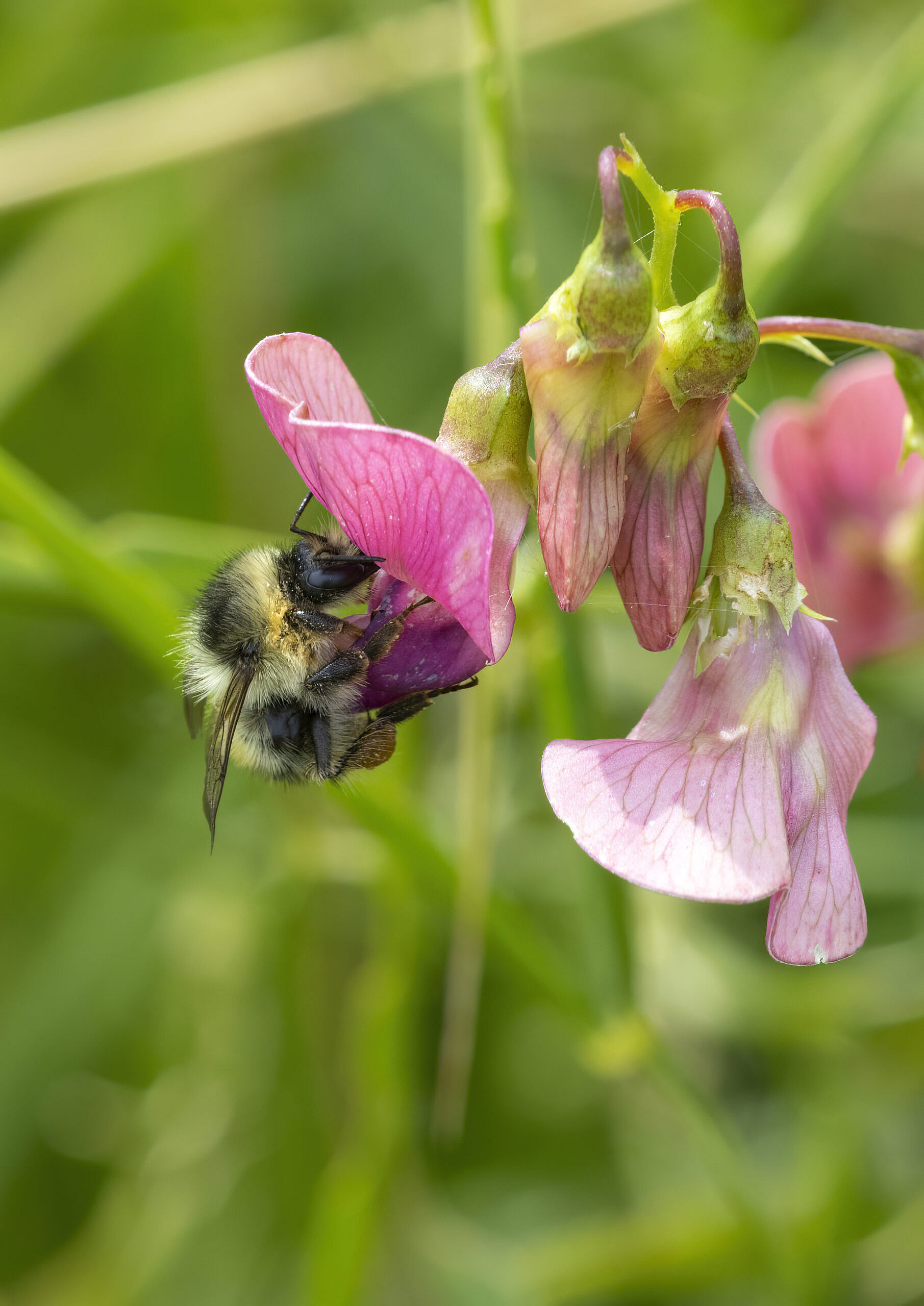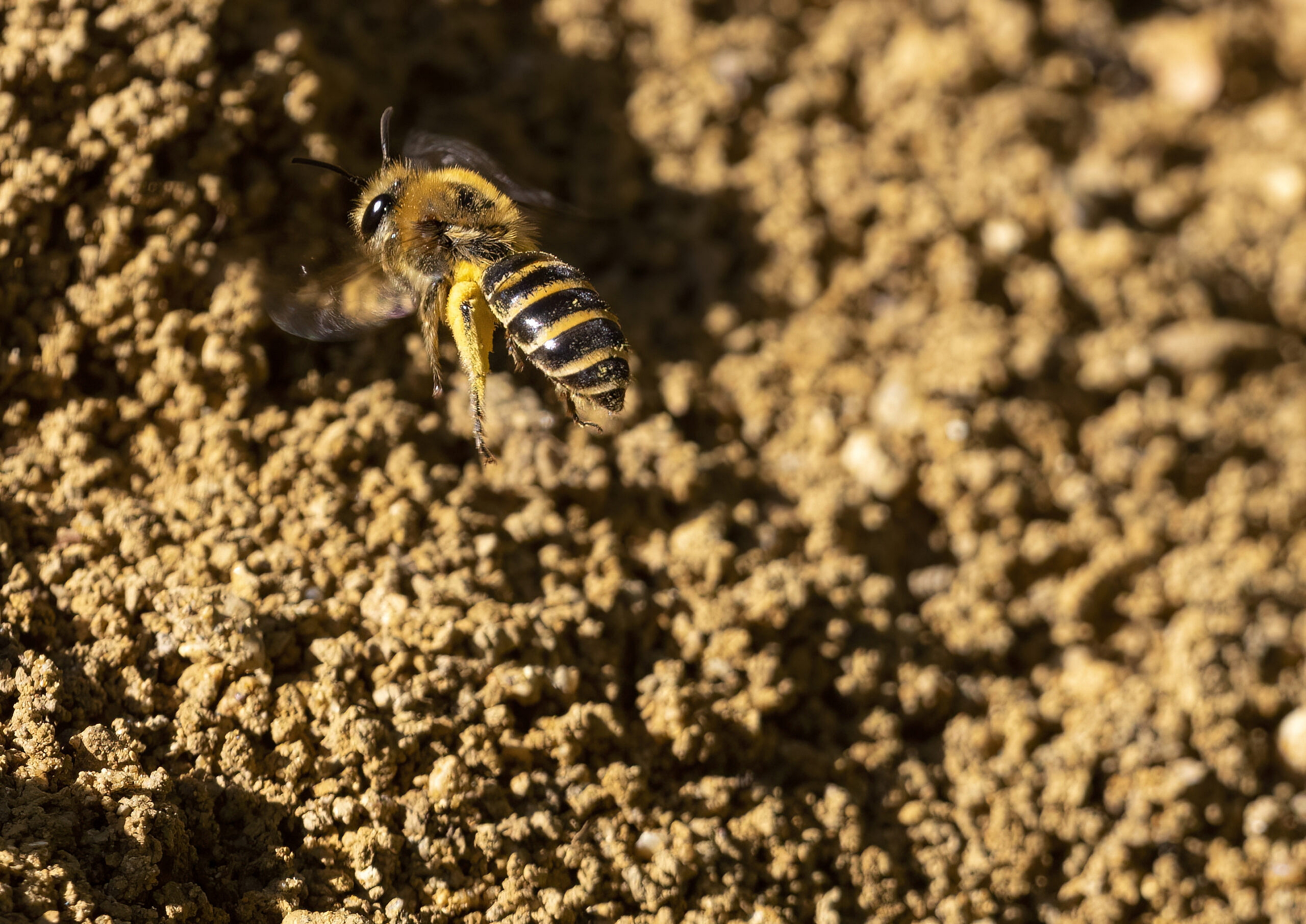It was my brother’s birthday recently, and as he doesn’t drive, I took him on a trip to a place that would normally be hard for him to get to. RSPB Newport Wetlands sits, as its name suggests, on the South coast of Wales near Newport. It’s an extensive area of… well, wetlands, those places of reedbed and marsh that we dismiss as useless only if we don’t understand their importance.
Trips to wetlands, especially on very windy days with a grim weather forecast, normally imply waterproofs and sheltering as best as you can while looking for distant wading birds on mudflats and amongst flagellating reeds. But this day held two surprises. The first was that the weather in Wales, famed for its wetness even in summer, defeated its forecast and held dry for the most part, gifting us sunny intervals that actually had some sun in them. The second surprise was the presence of a very rare bee.
If you’ve read my blogs over recent months, you’ll know that I am deeply concerned about the UK’s insect numbers, and especially our bees. And one of Britain’s rarest bees is the ‘shrill carder bee’. It’s something I’ve wanted to see for many years, so when I saw pictures of it displayed in the RSPB’s reception tent when we arrived, I asked about it. I was given guidance that it was usually found on everlasting sweet pea plants near to the sea. So we set off in that direction.

As my brother and I approached the sea wall, the wind strengthened and doubts set in. For years, it was not understood how bees- and especially bumblebees – managed to fly. With large bodies and puny wings, any number of scientists were happy to declare that what bees did was impossible, despite the evidence to the contrary. But then the ‘secret’ was discovered: bees just flap their wings really, really quickly. Even so, holding your own against a sea breeze gusting at 50mph was surely going to be a challenge. If the wind is travelling at that speed, you’ve got to fly at least that fast just to stay still: it was likely that any Welsh bee taking to the air that morning would quickly find itself in Newcastle. But barely had I glimpsed the distant sea than I saw a large stand of everlasting sweet pea, and zipping in and around it, several bees. And amongst those bees was a small one with a glistening furry coat. I had found the shrill carder bee.

It was a small bee, perhaps 10mm (less than half an inch) long, covered in silvery-yellow and black hair. They are named after the buzz that the queens make, described to me as so high-pitched that the bee sounds more like a fly. In one brief lull in the breeze I could hear it, a familiar bluebottle sound weirdly coming from a bee.
Despite their small size, shrill carders have comparatively long tongues, so prefer flowers like the everlasting pea where the nectaries are set further back, giving them an edge over their rivals for the nectar. But because they are a late-emerging species, not normally on the wing until May, they need food plants to be available until late in the year, September or October. This means that they have suffered from agricultural intensification where crops are often harvested before then. The species is now further threatened because the few remaining populations (in the Thames Estuary, Somerset, the Gwent Levels, and South Wales) are all isolated now, and becoming inbred.

It’s easy to dismiss the potential loss of the shrill carder. We do, after all, have other bees. But every species is unique, and every one we lose reduces the chances that one will survive to fit the complex new climate that our wildlife is facing. And for me, there was something about this small insect, with its ceaseless industry and its ability to fly in a gale despite its preposterously small wings, that made me admire it tremendously. It may be small, but it is perfect. Something to treasure.



Social Profiles